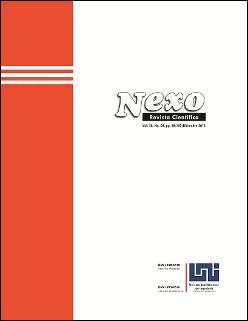OPTIMIZATION OF PROFITABILITY INDICATORS THROUGH THE AURIC DEPRECIATION MODEL IN NICARAGUA
DOI:
https://doi.org/10.5377/nexo.v28i2.3441Keywords:
Auric Depreciation, internal rate of return, Fibonacci sequence, profitability index, Tax incentiveAbstract
The implementation of fiscal measures tends to diminish the impact of the tax burden on business economic activities. For years has been used depreciation as a tax shield, so a new model called auric depreciation raised. This approach of the model consisted in weighing higher values in the early years of an asset with regard to the Fibonacci sequence, so serve the improvement of profitability indicators: internal rate of return (IRR) and profitability index (IR). This new model with the straight line and accelerated depreciation (by sum of digits), was compared by the setting of a stage for the enterprise with a minimum annuity to carry the premise of profitability; this annuity with the 30% tax burden was reduced but not before applying three depreciation methods. At the end, average IRR and IR corrected for taxes, proved to be greater with the application of the Auric to planned growth rates higher than 16%, as lower rates is not allowed an appreciable return by any method. This model has, therefore the purpose serve as an incentive for the creation and formalization of new companies, it allows capitalization and survival, and warrants to the tax administration revenue in the long run.Downloads
Download data is not yet available.
Abstract
1702
1702
PDF (Español (España)) 3033
Downloads
Published
2017-03-21
How to Cite
Silva, F., Marenco, G., & Zelaya, C. (2017). OPTIMIZATION OF PROFITABILITY INDICATORS THROUGH THE AURIC DEPRECIATION MODEL IN NICARAGUA. Nexo Revista Científica, 28(2), 67–82. https://doi.org/10.5377/nexo.v28i2.3441
Issue
Section
Articles
License
The authors who publish in Nexo Scientific Journal agree to the following terms:
- Authors retain the copyright and grant the journal the right of the first publication under the license Creative Commons Attribution License, which allows others to share the work with a recognition of the authorship of the work and the initial publication in Nexo Scientific Journal.
- Authors may separately establish additional agreements for the non-exclusive distribution of the version of the work published in the journal (for example, in an institutional repository or a book), with the recognition of the initial publication in Nexo Scientific Journal.
- Authors are allowed and encouraged to disseminate their works electronically (for example, in institutional repositories or in their own website) before and during the submission process, as it can lead to productive exchanges, as well as earlier and greater citation of published works.










